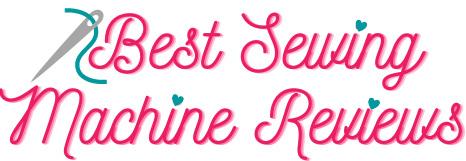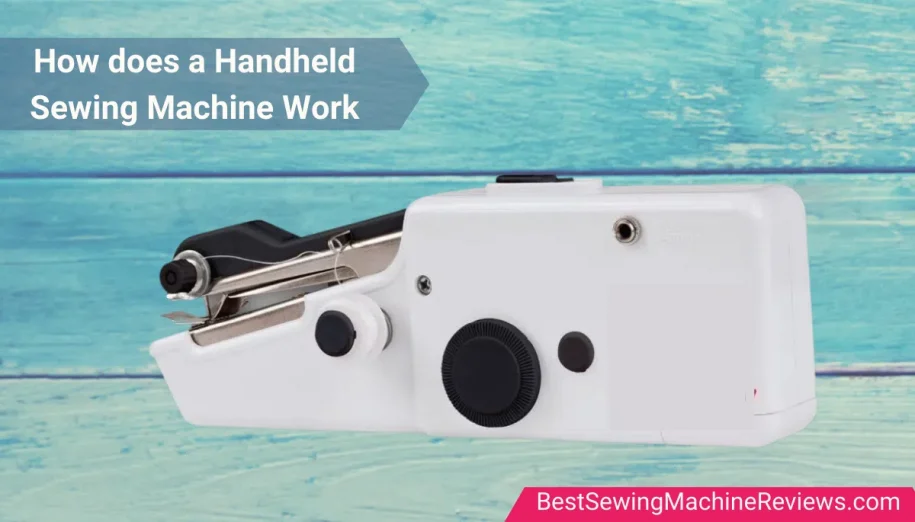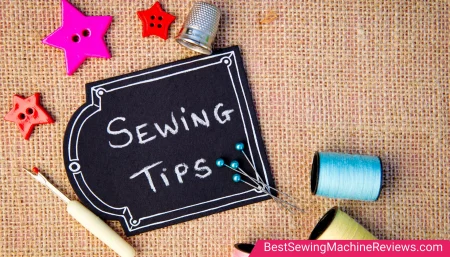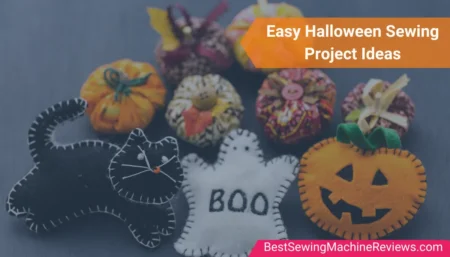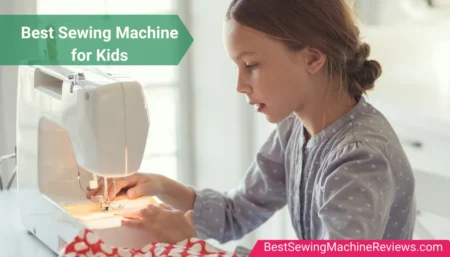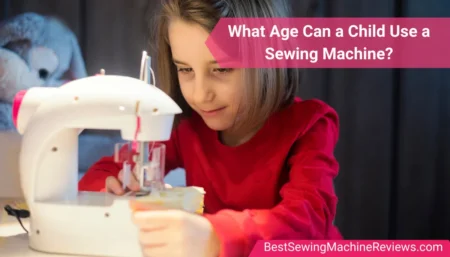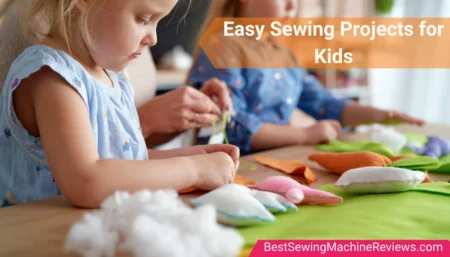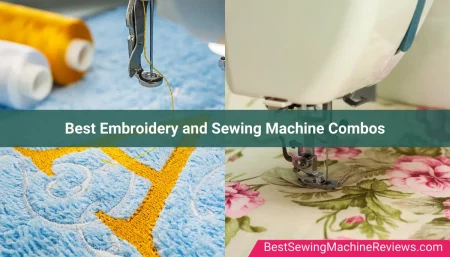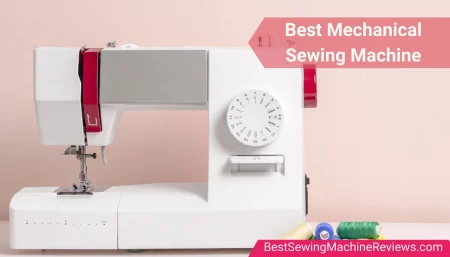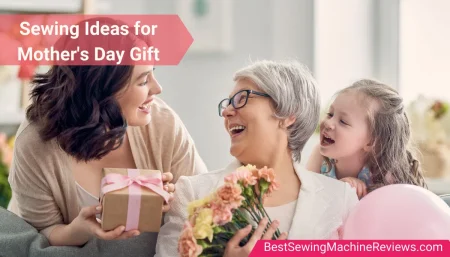Handheld machines, also known as the stapler sewing machine, ARE stapler-like equipment used for tiny repairs instead of normal ones. It is, without a doubt, portable, and its size isn’t as large as a regular sewing machine. Its appearance is similar to that of a stapler, and it is also roughly the same size.
Which fabric types can you sewing with a Handheld Sewing Machine?
Cotton, nylon, silk, and polyester are just a few of the materials that a hand sewing machine can sew. Thicker fabrics like denim, leather, tweed, upholstery, flannel, and suede cannot be sewn by a hand held sewing machine due its tiny structure and low power sewing.
How does a Handheld Sewing Machine work?
If you are a novice sewist, I bet you don’t know how to use a handheld sewing machine? How to use a handheld sewing machine is a tricky but interesting task. Here are some of the handheld sewing machine instructions to get you started:
Load the Batteries
The first thing you need to do is load in the 4 AA batteries, but remember to lock the machine beforehand.
Set up the Bobbin
The bobbin holder is on the left side of the sewing machine. To set it up, you need to pull the bobbin holder and also the spring and slide the bobbin in place.
Also worth mentioning, the handheld machines use a single source of thread – the bobbin.
Operating a Handheld Sewing Machine
How to Thread a Handheld Sewing Machine?
All of the sewing machines on this list will come with threading instructions, nevertheless here are the steps on how to thread a handheld sewing machine :
- First of all set up the batteries.
- Now place the bobbin on the machine’s side.
- Pull the thread over the bobbin holder to the threaded hole, which is generally a few centimeters away.
- Pass the thread through the tension controller.
- If there is a second thread hole, the thread must be directed through it.
- Use a needle threader to thread the thread through the eye of the needle, running it from back to the front.
- Pull the thread through the hole and beneath the presser foot to complete the project. (It’s not quite a presser foot, but it’s the best I could come up with.)
Finally Sewing with a Handheld
After threading the machine, you need to lift the sewing plate and insert the fabric to start stitching. Now point the fabric where you want to sew and start the machine. You will see that it’ll automatically start to feed the fabric.
Securing the Stitches
Now that you have done stitching, you need to secure the stitches. Because the portable sewing machine does not have reverse sewing, the securing method differs from that of a standard sewing machine. As a result, lift the fastening plate, draw the thread, and cut it. Then, using the rotary wheel, make a loop at the fabric’s end where you want to attach the threading. Although this is a manual operation, it is the only way to secure the stitch with a handheld machine.
You can watch this YouTube Video for a demo on threading a Handheld sewing machine.
Pros and Cons of a Handheld Sewing Machine
A handheld sewing machine is a handy accessory to sew your fabric or clothes when needed. In fact having one on a long trip can save you from clothing accidents. No matter wherever you are, you can fix your torn clothes within a matter of minutes. That too without any professional help. There are many benefits of having one tiny sewing machine in your purse.
Contrary to that, when you start expecting a lot from this cute little equipment, that is when things begin to change. Because a handheld sewing machine is meant for smaller sewing and stitching projects. OR maybe fixing some torn clothes, or pants that you have just ripped a while a go in an accident.
So here are some pros and cons of having a handheld sewing machine, which need to be consider before owning one.
Pros
- Portable
- Save space when you are carrying one with you
- Lightweight
- Cordless, and can be used with batteries
- Affordable
Cons
- They are inconvenient to use for a beginner
- Can have unstable sewing due to placement and holding issues
- Cannot be used for thicker fabric
- Tension can be disturbed easily
- Uneven stitches
What Projects can it perform?
A hand-held sewing machine can perform all sorts of small projects containing thinner fabric types. Heavy duty sewing should not be expecting from these cute little sewing machines.
- You can sew a pillow case with it
- Stitch your torn shirt
- Sew handkerchief
- Tiny Doll clothes can be sewn
- Sew a hole in your bedsheet
Things You Should Look For Before Buying a Handheld Machine
When looking for a handheld stitching machine, there are a few things to keep in mind. Although the handheld machine can make life much easier, it is not always inexpensive. As a result, you must make a calculated decision. We’ve listed a few things you should look for before buying a handheld sewing.
Portability
The reason why people prefer a handheld sewing machine is because of its portability. Make sure that the handheld sewing machine you are about to buy is easy to carry around when travelling. Moreover, it should have reliable power source to perform for quite a time.
Proper Grip
A hand held sewing machine is operated using the grip of your hand, therefore, you need to ensure that the model you select has a good grip. A slippery or uneven surface will cause inconvenience for the sewer and the sewing process.
Fabric Compatibility
A handheld sewing machine is a great equipment for smaller projects, or easier fabrics. Because it is not much powerful given the amount of energy it uses from a battery. However, if you are looking forward to work on tougher fabrics like leather, or denim, we suggest you to replace it with a more powerful sewing machine.
Accessories Included
A handheld sewing machine usually comes with all the accessories it needs. Such as bobbin and needles are something that is included in the package. However, if any of its necessary accessories are not included, consider buying them separately or buy a sewing machine that has the complete bundle. Buying extra sewing machine needles is always a safe step.
Design
Although design is just an appearance of the sewing machine, but an attractive design can freshen up your mood while you sew. There are many designs available in the market that may be pleasing to hold and use for your smaller projects. Therefore, finding a design that you are comfortable using is also a point to consider while buying one.
Durability
Who does not like to buy a handy equipment that lasts longer? Well, these tiny sewing machines may be affordable and fragile, but compromising on the quality is never recommended at any cost. Nonetheless, buying a more reliable brand is a best choice you can make for a durable hand held sewing machine.
Conclusion
Convenience is the most important factor when it comes to using handheld devices, and these are just some of the alternatives that you might want to look into. Despite a few minor drawbacks, the many advantages of owning a handheld sewing machine far exceed the downsides of it. The price ranges from as little as $12 to as high as $50 for the most expensive model, but it’s still worth a try!
